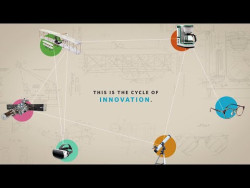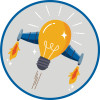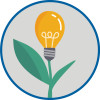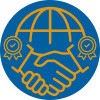We assume nothing about your knowledge of patents and how to receive one. This section starts simple, with “What is a patent?”, moving from there to assistance with your application. Feel free to skip sections with which you’re already familiar. Applying for a patent can be detailed and complex, but we’re here to walk you through it.
Here you’ll get answers to the basic questions about patents in the United States and foreign countries. We also provide inventor assistance resources as well as an overview of the functions of the USPTO, while also covering the history of U.S. patent protection.
Basic questions about patents
Get answers to the simplest patent-related issues you could ask about.
What is intellectual property?
IP is creative works or ideas embodied in a form that can be shared or enable others to recreate, emulate, or manufacture them.
Patents, trademarks, copyrights, and trade secrets are different types of IP. The USPTO grants patents and registers trademarks, while copyrights are registered by the U.S. Copyright Office at the Library of Congress.
Do you know what types of IP you might have? Do you know how to protect them? Use the USPTO’s IP Identifier to find out the types of IP you might have and learn how to protect them. Start with six basic questions to help identify your IP, then dig in deeper with the advanced questionnaire for each type of IP.
What is a patent?
A U.S. patent gives you, the inventor, the right to “exclude others from making, using, offering for sale, or selling” an invention or “importing” it into the U.S. A plant patent gives you additional rights on the “parts” of plants (e.g., a plant patent on an apple variety would include rights on the apples from the plant variety). What is granted is not the right to make, use, offer for sale, sell or import the invention, but the right to stop others from doing so. If someone infringes on your patent, you may initiate legal action. U.S. patents are effective only within the U.S. and its territories and possessions.
Types of patents
These are the three types of patents:
Utility patents
for inventing a new or improved and useful process, machine, article of manufacture, or composition of matter.
Design patents
for inventing a new, original, and ornamental design for an article of manufacture.
Plant patents
for inventing or discovering and asexually reproducing any distinct and new variety of plant.
How long is a patent valid?
Utility and plant patents have a term for up to 20 years from the date the first non-provisional application for patent was filed. A design patent is granted for a term of 15 years from the date of grant. You will need to pay maintenance fees on a certain schedule after the utility patent is issued in order to keep it in force. Under certain unusual conditions, patent terms may be extended or adjusted.
What can be patented?
Legally, a utility patent may cover “any new and useful process, machine, manufacture, or composition of matter, or any new and useful improvement thereof.” A design patent may cover “any new, original, and ornamental design for an article of manufacture,” and a plant patent may cover a “distinct and new variety of plant, including cultivated sports, mutants, hybrids, and newly found seedlings, other than a tuber-propagated plant or a plant found in an uncultivated state,” invented or discovered and asexually reproduced.
So, for a patent to be issued, your invention must meet four conditions:
- Able to be used (the invention must work and cannot just be a theory)
- A clear description of how to make and use the invention
- New, or “novel” (something not done before)
- “Not obvious,” as related to a change to something already invented
Patent law defines the limits of what can be patented. For example, the laws of nature, physical phenomena, and abstract ideas cannot be patented, nor can only an idea or suggestion. Other restrictions include the patenting of inventions exclusively related to nuclear material or atomic energy in an atomic weapon (see MPEP 2104.01). However, the subject matter that can be protected by patents is vast and varied. For example, even some methods of doing business may be patented. To learn more, visit our Business Methods page.
Who may apply for a patent?
You (the inventor) or your legal representative may apply for a patent, with some exceptions. These include if the inventor has died, is legally incapacitated, refuses to apply, or cannot be found. Two or more people inventing something together may apply for a patent as joint inventors. A person (e.g., a company) to whom an inventor has assigned an invention, or to whom the inventor is obligated (e.g., contractually required) to assign an invention, may also apply for a patent.
If you only contribute money but are not the inventor or co-inventor, you cannot be named as an inventor or co-inventor in the patent application. Furthermore, if you are not the inventor, and the inventor(s) did not assign the invention to you or does not have an obligation to assign the invention to you, you may not apply for a patent. USPTO employees cannot apply for or own a patent unless they inherit it.
What about foreign applicants for U.S. patents?
You may apply for a U.S. patent whether you’re a U.S. citizen or not. No U.S. patent can be issued if, before you apply in the United States, the invention was patented abroad by you or your legal representative and if the foreign application was filed more than 12 months before the U.S. filing. Six months are allowed in the case of designs. Foreign inventors should pay attention to other special requirements.
More information on foreign applications
A U.S. patent application by anyone previously filing one for the same invention in a foreign country that affords similar privileges to U.S. citizens has the same legal standing as if filed in the United States on the date the application was first filed in that country. This is provided the U.S. application is filed within 12 months (six months for a design patent) from the earliest date on which any such foreign application was filed. Such an application takes priority over the foreign application (see 35 U.S.C. 119[b]). To secure this right of priority, you must submit a copy of the foreign application certified by the patent office in the country where it was filed.
To claim priority as noted, if you or your legal representative has filed in any foreign country prior to a U.S. application, you must state both the country where the earliest such application has been filed and the filing date.
An oath or declaration must be made with every application. For any document in which any law, rule, or other regulation requires an oath, a written declaration may be used instead (see MPEP 602 for more information).
When using an oath, applicants from foreign countries must make the oath before any U.S. diplomatic or consular officer, or before any officer with an official seal and authorized to administer oaths in the appropriate country. Such officers must prove their authority by a certificate of a U.S. diplomatic or consular officer. The oath or declaration must always be attested by the proper official seal of the presiding officer.
For an oath taken before an officer in the foreign country, all application papers (except the drawing) must be attached together. Also, a ribbon must be passed one or more times through all sheets of the application, and the ends of the ribbons brought together under the seal before the latter is affixed and impressed, or else each sheet must be impressed with the official seal of the presiding officer. A declaration merely requires a specific averment (see 37 CFR 1.68).
If the legal representative (executor, administrator, etc.) of a deceased inventor files the application, that representative must make the oath or declaration. For a declaration, the ribboning procedure is unnecessary, and the representative does not need to appear before an official. Foreign applicants may be represented by any patent attorney or agent registered to practice before the USPTO.
How do I apply for a patent?
Getting and maintaining a patent is a multi-step process. The USPTO has many resources to help you throughout as you prepare and submit your application, engage with your examiner, receive approval for your patent, and maintain it. Each step plays an important role in the overall patenting process. Learn more about the process here.
Read more frequently asked questions
Foreign patents and treaties
International patent law differs greatly from U.S. patent law — in fact, the differences are as plentiful as there are countries. We’re here to help you navigate the wide world of IP.
Since the rights granted by a U.S. patent extend only throughout U.S. territory and have no effect in a foreign country, inventors wishing patent protection in other countries must apply for a patent in each of the other countries or in regional patent offices, such as the European Patent Office (EPO).
Almost every country has its own patent laws, and those desiring a patent in a particular country must apply in that country, in accordance with its requirements. Two World Intellectual Property Organization Treaties facilitate the filing of patent applications. The Patent Cooperation Treaty does so for utility patents in both the U.S. and many foreign countries. Similarly, the Hague System for the International Registration of Industrial Designs facilitates filing design patent applications and design registrations in the U.S. and foreign countries.
The patent laws of many countries differ in various respects from U.S. patent law. In most foreign countries, publication of the invention before the filing date of the application will bar the right to a patent. Some countries allow for compulsory licenses to permit the use of the subject matter of a patent without the authorization of the patent owner, if certain conditions are met.
International agreements on patents and patent-related intellectual property protection provide an important backbone to the global IP system:
Paris Convention for the Protection of Intellectual Property
A treaty relating to patents (adhered to by 176 countries at last count, including the United States) is known as the Paris Convention for the Protection of Industrial Property. It provides that each country guarantees to citizens of the other countries the same patent and trademark rights given to its own citizens.
The treaty also provides for the right of priority with patents, trademarks, and industrial designs (design patents). This right means that based on a regular first application filed in one member country, you may (within a certain time period) apply for protection in all other member countries. These later applications will then be regarded as if filed on the same day as the first application. Thus, these later applicants will have priority over applications for the same invention that may have been filed by others during the same time period.
Moreover, these later applications, being based on the first application, will not be invalidated by any actions in between. Examples include publication or exploitation of the invention, sale of copies of the design, or use of the trademark. The time period mentioned above, within which the subsequent applications may be filed in the other countries, is 12 months for first applications for patents, and six months for industrial designs and trademarks.
Patent Cooperation Treaty
Another treaty, the Patent Cooperation Treaty, is presently adhered to by more than 150 countries, including the United States. It facilitates the filing of patent applications on the same invention in member countries by providing, among other things, centralized filing procedures and a standardized application format.
The timely filing of an international application affords you an international filing date in each country designated in the international application. It also provides a search of the invention and a later time period within which the national applications for patent must be filed. Some patent attorneys specialize in obtaining patents in foreign countries.
Hague Agreement
The Hague Agreement is an international registration system offering the possibility of protection for up to 100 industrial designs in designated member countries and intergovernmental organizations (called Contracting Parties). It involves filing a single international application in a single language, either directly with the International Bureau of the World Intellectual Property Organization (WIPO) or indirectly through the office of your Contracting Party.
Under U.S. law it is necessary, in the case of inventions made in the United States, to obtain a license from the Director of the USPTO before applying for a patent in a foreign country.
More information on foreign filing licenses
Such a license is required if the foreign application is to be filed before an application is filed in the United States or before the expiration of six months from the filing of an application in the United States, unless a filing receipt with a license grant issued earlier. The filing of an application for a U.S. patent constitutes the request for a license and the granting or denial of such request is indicated in the filing receipt mailed to each applicant. After six months from the U.S. filing, a license is not required unless the invention has been ordered to be kept secret. If the invention has been ordered to be kept secret, the consent to the filing abroad must be obtained from the Director of the USPTO during the period the order of secrecy is in effect. For more information on foreign filing licenses see MPEP Chapter 140.
U.S. businesses and stakeholders who are encountering difficulties in protecting or enforcing intellectual property rights in a foreign country are encouraged to use the IP Attaché Program as a consultation resource. For more information on international programs and initiatives visit the Office of International Patent Cooperation (OIPC).The USPTO provides policy leadership, advocacy, and technical and trade expertise in domestic and international patent and patent-related intellectual property (IP) rights. For more information see patent policy.
Inventor assistance
It’s possible to receive a patent on your own, but it’s much easier with help from us and qualified professionals. Take full advantage of the resources we (and they) provide.
The patent process is a complex set of laws, regulations, policies, and procedures. Thus, the USPTO always recommends using a registered patent attorney or agent to assist in preparing your application. The USPTO also recognizes that the cost of legal assistance can be prohibitive, particularly for independent inventors and small businesses. The Pro Se Assistance Program helps them protect their valuable IP.
The inventor and entrepreneur resources page covers most aspects of the patent process. It provides information about scams and how to avoid and report them.
In addition, the Inventors Assistance Center (IAC) provides patent assistance and information to the public. The IAC is staffed by former supervisory patent examiners and primary examiners who answer your questions so as to make filing a patent application simpler and more efficient.
History and functions of the USPTO
Here we overview the various ways we serve you as you apply for a patent and fulfill the Constitutional mandate to protect IP. Learn about what we do and our IP legacy.
With its foundation in the Constitution, the U.S. IP system developed alongside a growing and changing nation. From the first patent act, signed by George Washington in 1790, to today’s agency with more than 13,000 employees, patents and trademarks powered some of the biggest developments in U.S. history. Visit the History section of the website to learn more.
Most of the USPTO’s current employees examine patent and trademark applications, while others apply their technical and legal training to support the agency’s mission. The agency receives more than half a million patent applications yearly. The USPTO headquarters is in Alexandria, Virginia, with regional offices in Detroit, Dallas, Denver, and the Silicon Valley (San Jose, California).
The Under Secretary of Commerce for Intellectual Property and Director of the USPTO (one person occupies both positions) leads the agency. The Director’s executive committee includes commissioners for both Patents and Trademarks, and other leaders. As head of the agency, the Director fulfills these roles:
- Oversees everything related to the granting and issuing of patents
- Supervises all USPTO work
- Prescribes rules for the agency’s activities, and its recognition of attorneys and agents (as approved by the Secretary of Commerce)
- Answers legal questions
- Performs other necessary administration
The USPTO protects you, the inventor, by granting patents and administering patent law. Patent examiners review patent applications, and Patent Trial and Appeal Board judges review appeals from patent examiner decisions, and also resolve disputes over issued patents. The USPTO publishes granted patents on their issue date and publishes most patent applications on or after 18 months from the filing date of your application.
Other functions include recording patent assignments, maintaining a research facility for public examination of issued patents and related records, and supplying physical and electronic copies of these records and other papers. It also educates the public about patent law. The USPTO does not have the authority to enforce patents.
In addition, the USPTO grants patents you may use to prevent others from making, using, selling, and importing your invention. It also registers trademarks, as well as assisting the U.S. President, the Department of Commerce, and other government agencies in all domestic and global IP matters.
The USPTO also helps protect IP worldwide for inventors like you by working to include strong IP provisions in all international agreements. It also promotes worldwide respect for IP and encourages U.S. trading partners to take IP enforcement seriously.
Patent examiners review your application as assigned to units specializing in the broad and specific subject areas that best cover your invention. After reviewing your application, examiners grant or deny the patent request. If an examiner denies your patent, you can appeal the decision to a special board. The Director of the USPTO may also review the decision.
Through the protection provided by patents, American industry has prospered. People like you have invented new products, discovered new uses for old ones, and created jobs. U.S. economic strength depends on protecting your development of innovative ideas. The continued demand for patents shows the ingenious spirit of you and fellow inventors, whom the USPTO helps promote.








